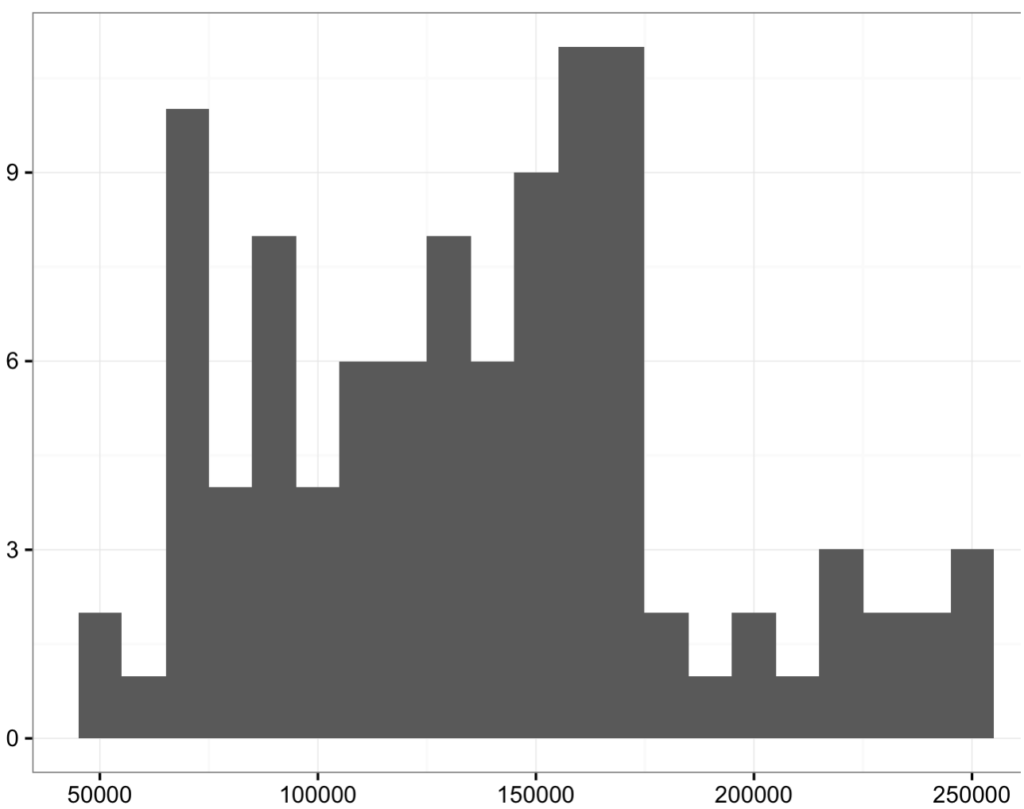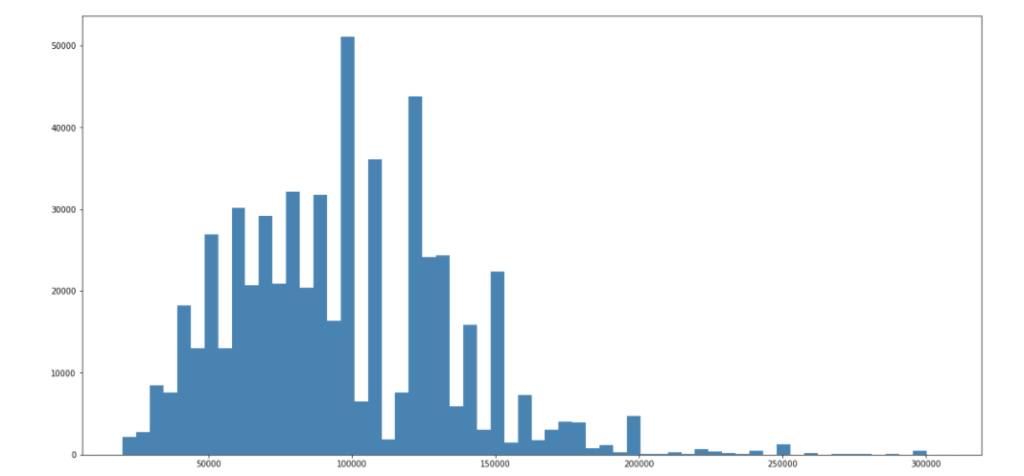
A few years ago, a developer named Dan Luu published an interesting analysis of developer compensation. Although his data set was limited (as he restricted himself to surveys and studies that focused on total compensation, not just salary), he found that developer salaries fell into a somewhat bimodal pattern, with two “spikes” at around $70,000 and $150,000. Here is Luu's visualization of that data, which came from researchers Dan Zhang and Jesse Collins and focused primarily on salaries of recent graduates; the sample size is only 100:  "There’s certainly a wide range here, and while it’s technically bimodal, there isn’t a huge gulf in the middle like you see in law and business," Luu wrote. "Note that this data is mostly bachelors grads with a few master’s grads. PhD numbers, which sometimes go much higher, aren’t included." Unlike other professions, software development doesn’t have formal “gates” that practitioners must navigate through in order to achieve the highest tiers of compensation (i.e., a progression through college, graduate school, a certifying exam, landing a job at a top-tier company, etc.); that alone prevents a relatively small group of developers from seizing an outsized proportion of the total income pool. “In software, compensation tends to be on a case-by-case basis, which makes it much less likely that we’ll see a sharp peak the way we do in law,” Luu wrote. “If I had to guess, I’d say that while the dispersion in programmer compensation is increasing, it’s not bimodal, but I don’t really have the right data set to conclusively say anything.” What does Dice’s data reveal about developer salaries? First, that they don’t fall into that bimodal pattern; although there are a few “peaks” at $100,000 and $120,000, for example, salary seems to be relatively distributed. (There are other, smaller spikes at $150,000, $175,000, and $200,000.) Dice’s data extends back to March 2015, and doesn’t include other points of compensation such as equity, bonuses, and the like:
"There’s certainly a wide range here, and while it’s technically bimodal, there isn’t a huge gulf in the middle like you see in law and business," Luu wrote. "Note that this data is mostly bachelors grads with a few master’s grads. PhD numbers, which sometimes go much higher, aren’t included." Unlike other professions, software development doesn’t have formal “gates” that practitioners must navigate through in order to achieve the highest tiers of compensation (i.e., a progression through college, graduate school, a certifying exam, landing a job at a top-tier company, etc.); that alone prevents a relatively small group of developers from seizing an outsized proportion of the total income pool. “In software, compensation tends to be on a case-by-case basis, which makes it much less likely that we’ll see a sharp peak the way we do in law,” Luu wrote. “If I had to guess, I’d say that while the dispersion in programmer compensation is increasing, it’s not bimodal, but I don’t really have the right data set to conclusively say anything.” What does Dice’s data reveal about developer salaries? First, that they don’t fall into that bimodal pattern; although there are a few “peaks” at $100,000 and $120,000, for example, salary seems to be relatively distributed. (There are other, smaller spikes at $150,000, $175,000, and $200,000.) Dice’s data extends back to March 2015, and doesn’t include other points of compensation such as equity, bonuses, and the like:  Dice's visualization doesn't include total compensation, which can include a variety of monetary and non-monetary perks. For example, you can easily attach a value to things like healthcare, free meals, and the other bells and whistles that many tech companies (including larger ones) like to attach to employment contracts. But such things aren't reflected here; the salaries, bimodal or not, need to be analyzed in isolation. Fortunately, given the tech industry’s low unemployment rate, there are lots of opportunities for developers at all points of their career to boost their salaries, especially if they can demonstrate how their efforts have a meaningful impact on their company’s broader fortunes. And even if an employer is unwilling to boost pay, they may prove more amenable to negotiating for perks such as flexible hours.
Dice's visualization doesn't include total compensation, which can include a variety of monetary and non-monetary perks. For example, you can easily attach a value to things like healthcare, free meals, and the other bells and whistles that many tech companies (including larger ones) like to attach to employment contracts. But such things aren't reflected here; the salaries, bimodal or not, need to be analyzed in isolation. Fortunately, given the tech industry’s low unemployment rate, there are lots of opportunities for developers at all points of their career to boost their salaries, especially if they can demonstrate how their efforts have a meaningful impact on their company’s broader fortunes. And even if an employer is unwilling to boost pay, they may prove more amenable to negotiating for perks such as flexible hours.


